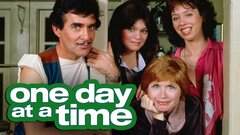Frank Miller

Comic Book Writer • Animator • Director • Producer
Birth Date: January 27, 1957
Age: 68 years old
Birth Place: Olney, Maryland
As one of the greatest innovators in the comic book field, particularly for his revisionist take on popular characters, hard-boiled writer and artist Frank Miller was destined to make his presence known in Hollywood. After earning acclaim and a large fan base with his revival of Daredevil for Marvel Comics and his own original samurai-themed work Ronin (1983), Miller was propelled to comic book superstardom thanks to his groundbreaking, post-modern take on the Cape Crusader, Batman: The Dark Knight Returns (1986).
Soon after, Hollywood beckoned, which led to writing the scripts for "RoboCop 2" (1990) and "RoboCop 3" (1993). But his experience with being rewritten without consideration left Miller a bit jaded about the Hollywood process. He did, however, have comic books to fall back on, and created what became his most personal and subsequently successful series, Sin City (1992). Full of gorgeous black-and-white drawings with only tinges of color - representing the bleak noir world he presented - the comic became Miller's most crowning achievement.
Wary of Hollywood encroachment, he eventually consented to an adaptation after filmmaker Robert Rodriguez's insistent lobbying efforts, which resulted in the popular commercial success of "Sin City" (2005). Miller found himself at the top of the comic book adaptation heap with "300" (2007), a huge box office hit. Miller went solo as a director for the first time with an adaptation of "The Spirit" (2008), but his talents were always best served when sitting at a desk putting ink to paper.
Born on Jan. 27, 1957 in Olney, MD, Miller was raised in Montpelier, VT, with six other siblings by his carpenter and electrician father and his nurse mother. Miller considered himself a maladjusted child, whose self-proclaimed miserable youth prompted him to immerse himself in the fantasy world of comic books. As he matured, he adjusted a bit better, but maintained his interest in graphic entertainment as well as broadening his horizons into detective fiction and film.
With influences ranging from comic book legends Jack Kirby, Will Eisner and Wallace Wood to film masters Alfred Hitchcock and Akira Kurasawa, Miller moved to the Hell's Kitchen neighborhood in New York City and labored in fan publications before finally seeing his artwork published in Gold Key's comic, Twilight Zone (1978). He next found freelance work at DC Comics, drawing stories for such titles as Weird War Tales, as well as a piece for an anthology collection of Christmas stories that marked his first artwork depicting Batman, a character which he would later famously reinvent.
Miller's first regular work came from DC's primary rival, Marvel Comics, penciling a two-part Spider-Man story that guest-starred the less popular superhero, Daredevil. In 1980, a 21-year-old Miller lobbied to assume the art chores on the regular Daredevil title and earned the job, teaming for the first time with his frequent collaborator, artist Klaus Janson. He impressed fans with his kinetic depiction of the athletic, street-fighting hero and his diligently detailed, yet stylized depiction of the grim and gritty side of the hero's turf, Miller's own Hell's Kitchen neighborhood. Miller's influences and enthusiasm soon pervaded the book, and he quickly took over as writer and artist. Daredevil became a superhero with realistic personal problems, while introducing controversial subject matter like drug use as well as the deadly vigilante anti-hero, The Punisher.
Establishing himself as an iconoclast, Miller relocated to Los Angeles and left Marvel to pursue a golden opportunity at competitor DC, writing and drawing his own self-created 1983 graphic miniseries Ronin. An ambitious and experimental serialized adventure set in the future, in which a man is inhabited by the soul of a fierce ancient samurai and fights the repressive dystopia in which he exists, Miller was a one-man show, as he wrote, penciled, inked, edited, designed and even supervised at the printer. Although it was only distributed through comic shops, the innovative and adult-themed Ronin caught the attention of the mainstream. It also gave DC the confidence to let Miller loose on one of their flagship characters, Batman. Once a camp figure known primarily for the 1960s television character, DC had brought Batman back to his original 1930s crime noir roots as early as 1970. But in 1986, Miller's groundbreaking series, Batman: The Dark Knight Returns (1986), gave the crime fighter's dark and foreboding qualities a radical post-modern edge.
Miller next teamed up with artist David Mazzuccelli for the four-part storyline, Batman: Year One (1987), a taught and edgy postmodern origin story that helped make Miller one of the most significant creators in the character's long history, with his influence being strongly felt in the later "Batman" films, from Tim Burton's first two installments to Christopher Nolan's acclaimed reboots following Joel Schumacher's disastrous reign. Miller's distinctive art style was even directly adapted into a sequence in an episode of the animated "Batman: The Animated Series" (Fox/The WB, 1992-99). With his status within the comic industry at an all-time high, Miller also became a vocal champion of creators' right and anti-censorship. He was tapped to write the screenplay for "RoboCop 2" (1990), a move that given the tormented man vs. machine undercurrents and pointed use of violence seemed perfect for the writer.
But according to Miller, the typical grind of the Hollywood machine largely undercut his original vision and left him disappointed despite providing rewrites on set every day. Some Miller-esque elements did manage to survive and he returned for the underwhelming third installment, "RoboCop 3" (1993), claiming fascination with the moviemaking process. Miller moved on to join forces with Watchmen artist Dave Gibbons for the recurring series Give Me Liberty (1991), a scathing, satiric and frequently hilarious sci-fi parable starring Martha Washington, a poor black woman from Chicago who is drafted into a totalitarian paramilitary group, only to become humanity's best and brightest hope. Followed by two sequel miniseries, the Martha Washington books offered in-your-face social criticism, but lacked the resonance of Miller's earlier work. The otherwise entertaining Hard Boiled (1991) also suffered from similar problems, which was essentially an extreme and ultra-violent private eye pastiche set in yet another near-future dystopia, though beautifully illustrated by artist Geoff Darrow.
Miller and Darrow's subsequent collaboration, Big Guy and Rusty the Boy Robot (1996), a fond deconstruction of junky Japanese films and goofy robot-boy comics, proved accessible enough to be turned into the unlikely, but entertaining animated television series of the same name (Fox, 1999-2000). But it was Miller's original creation Sin City (1992) which he wrote, drew and published through the indie Dark Horse Comics, that ultimately proved to be his best-known work. Drawing on his love of crime noir and detective fiction, Miller disposed of his samurai and sci-fi trappings to create a dark, deadly town of boozy back alleys bereft of superheroes. In their place were downtrodden men with shady pasts, dangerous women fond of mixing sex and violence, and corruption around every corner.
Sin City displayed a new writing style that had evolved into a lean, sparse prose that packed as much punch as Mickey Spillane and as much urban poetry as Raymond Chandler. Meanwhile, Miller's art style was a graphic euphoria of stylized black and white imagery laced with tinges of single colors that artfully depicted the casual, but viscerally effective violence. Leaning as far away from mainstream comic book style, Sin City was a singular vision that caught fire with both Miller's legion of devotees and a substantial amount of mainstream readers. He eventually produced an increasingly impressive canon of intertwining series in which background characters in one story arc might emerge as major players in another.
The series also gave Miller widespread credit for giving comic books a cinematic feel and pace, thanks to influences in the works of noir masters like Sam Fuller, Fritz Lang and Orson Welles. Miller created another well-received comic book miniseries during his "Sin City" period, 300 (1998), a compelling, machismo-soaked, highly cinematic interpretation of the historic Battle of Thermopylae during the Spartan wars of 480 B.C. which was inspired by a childhood favorite film "The 300 Spartans" (1962). Meanwhile, his highly anticipated graphic sequel, The Dark Knight Strikes Again (2001), was a disappointment on a story-level, though once again the title proved to be a big seller.
Meanwhile, the film adaptation of "Daredevil" (2003), starring a misplaced Ben Affleck, was released to mixed reviews, though the box office take was brisk. Miller was granted source material credit for that movie's spinoff, "Elektra" (2005), which starred Jennifer Garner in a character that Miller had created for Marvel's Daredevil series, and continued with her own series Elektra: Assassin (1986) and Elektra Lives Again (1990). The movie failed to live up to its predecessor, receiving a deluge of negative reviews prior to a poor showing at the box office. Meanwhile, he teamed with superstar artist Jim Lee on the non-continuity comic title All-Star Batman and Robin the Boy Wonder (2005-08), which was originally met with great anticipation, but was eventually reviled by fans and critics, mainly due to Batman's unflinching sadism and even violent abuse towards innocent victims.
Miller had felt burned by his Hollywood experiences and had ditched his desire to direct a film in favor of returning to the drawing board. Even when studios repeatedly offered to option Sin City he remained fiercely protective of his work, viewing it as a safe haven. One Hollywood admirer of Miller's masterwork proved tenacious, however. Filmmaker Robert Rodriguez vigorously pursued the property by directly appealing to Miller, assembling an animated storyboard presentation of the film he had in mind, using photographs that mirrored Miller's comic book imagery. Although impressed, Miller initially declined. But Rodriguez continued his pursuit by shooting a short based on one of the stories, "The Customer is Always Right," which pushed Miller to eventually say yes.
He was also given the opportunity to write the script as well as co-direct alongside Rodriguez. But one week prior to the start of the production, the Directors Guild of America attempted to shut the film down due to Miller's lack of approved credentials. To fix the problem, Rodriguez simply quit the DGA and kept the film on track. The result was "Sin City" (2005), a visually stunning knockout that starred a slew of Hollywood stars, including Mickey Rourke, Bruce Willis, Clive Owen, Jessica Alba, Elijah Wood, Benicio del Toro, Brittany Murphy, Rosario Dawson and Michael Madsen. Though visually stunning, some critics lamented the lack of humanity on display amidst scenes of murder, torture and rape.
Following the better-than-expected box office success of "Sin City," Miller continued his abhorred title All-Star Batman and Robin the Boy Wonder while also seeing take on the Battle of Thermopylae go into production. "300" (2007) was basically a shot-for-shot adaptation of the comic and starred Gerard Butler as the King of Sparta, who valiantly leads his ragtag group of soldiers into battle against the million-strong army of Persian king, Xerxes (Rodrigo Santoro). Though critical reaction was once again mixed, the movie became a huge hit both internationally and on the domestic front, while proving that Miller's work could be translated into commercially successful entertainment.
Perhaps biting off more than he could chew, Miller stepped into the director's chair on his own to helm "The Spirit" (2008), a critically maligned adaptation of longtime friend Will Eisner's stylish comic about a murdered cop mysteriously reborn and turned into a masked vigilante (Gabriel Macht). Following that film's commercial flop, Miller was for some reason determined to resume All-Star Batman and Robin the Boy Wonder, if only because the title continued to sell despite years of fan derision.
Credits

Sergio Leone: L'italiano che inventò l'America
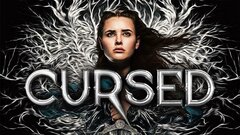
CursedStream

CursedStream

COMIX: Beyond the Comic Book Pages

300: Rise of an EmpireStream
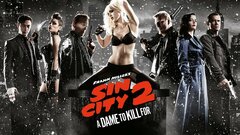
Sin City: A Dame to Kill ForStream

Sin City: A Dame to Kill ForStream

Sin City: A Dame to Kill ForStream

Flip or FlopStream
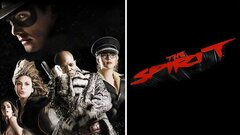
The SpiritStream

The SpiritStream
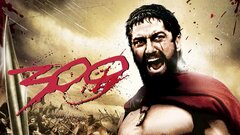
300Stream

Frank Miller's Sin City: That Yellow Bastard

Frank Miller's Sin City: The Big Fat Kill

Frank Miller's Sin City: The Customer Is Always Right

Frank Miller's Sin City: The Hard Goodbye
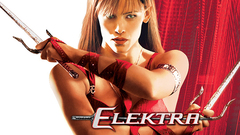
ElektraStream
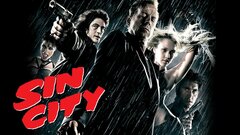
Sin CityStream

Sin CityStream

Sin CityStream

RoboCop 3Stream
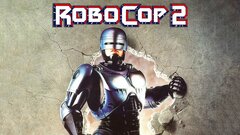
RoboCop 2Stream
